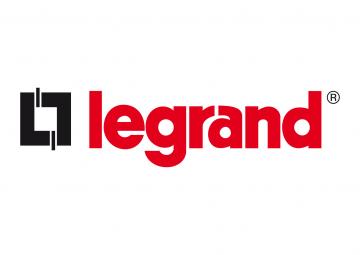At VERGE SF, Legrand announced it is sharing key energy savings resources that have been developed as part of a successful effort to significantly reduce energy intensity across its North American facilities. These resources can be used by manufacturing companies and other organizations to develop and implement energy and cost savings programs for their businesses.
The first energy savings resource, a 16-page Energy Management Handbook, is a straightforward tool to help companies take a practical and logical approach to launching an energy management program. The handbook draws on key learnings from Legrand’s efforts to reduce energy consumption. It outlines a four-step process: Making a Commitment, Assessing Your Current State of Energy Use, Creating an Action Plan, and Reporting and Evaluating Progress. The handbook is available for download at www.legrand.us/sustainability.
The second resource is a new Energy Project Evaluation Tool, an interactive spreadsheet that shows companies where to start on their energy savings journey. To explain the Energy Project Evaluation Tool, Legrand will offer Web-based learning modules.
Both energy savings resources are offered at no cost as part of Legrand’s ongoing commitment to share resources it is developing as it reduces energy intensity across its North American facilities.
“Legrand is working to make dramatic improvements in energy management across our North American sites – from office buildings to warehouses to factories," said Susan Rochford,Vice President of Energy Efficiency, Sustainability & Public Policy for Legrand North America. "At VERGE SF, I am sharing the story of our public commitment – as part of the Department of Energy’s Better Buildings, Better Plants Challenge – where in two short years, we achieved a 20.2 percent energy intensity reduction across our facilities.”
Added Legrand North America President and CEO John Selldorff, “The success we’ve witnessed in the last two years has stemmed not only from the implementation of energy projects, but from a holistic framework that includes initiatives aimed at engaging employees in energy savings, establishing visible energy goals and accountability to meet them, and launching a common company-wide approach to tracking, reporting, and analyzing energy use – this is our focus on people, processes, and technology. We’re committed to sharing our energy savings resources with other companies who may be starting or are in the middle of their sustainability journey.”
According to Joel Makower, Executive Editor of GreenBizGroup and host of the VERGE SF conference, “Legrand is taking a major step in freely sharing the resources it has developed, including its own best practices, with other organizations. This showcases the power of working together - across companies and sectors – to optimize everyone’s energy use. We’re excited to hear their success story and support them in sharing their tools with other companies around the world.”
Related Stories
| Feb 22, 2011
Military tests show copper increases HVAC efficiency, reduces odors
Recent testing, which is being funded by the Department of Defense, is taking place in military barracks at Fort Jackson, South Carolina. Side-by-side comparisons demonstrate that air conditioning units made with copper suppress the growth of bacteria, mold, and mildew that cause odors and reduce system energy efficiency.
| Feb 10, 2011
Zero Energy Buildings: When Do They Pay Off in a Hot and Humid Climate?
There’s lots of talk about zero energy as the next big milestone in green building. Realistically, how close are we to this ambitious goal? At this point, the strategies required to get to zero energy are relatively expensive. Only a few buildings, most of them 6,000 sf or less, mostly located in California and similar moderate climates, have hit the mark. What about larger buildings, commercial buildings, more problematic climates? Given the constraints of current technology and the comfort demands of building users, is zero energy a worthwhile investment for buildings in, for example, a warm, humid climate?
| Feb 9, 2011
Fortune 1000: Despite moral obligation to sustainability, cash is still king
Eighty-eight percent of Fortune 1000 senior executives feel business has a moral responsibility, beyond regulatory requirements, to make their companies more energy efficient, according to a new poll released today by Harris Interactive and commissioned by Schneider Electric. At the same time, the vast majority (61%) of respondents say that potential cost savings are their biggest motivator to save energy at the enterprise-level, outranking environmental concerns (13%) or government regulations (2%).
| Feb 4, 2011
U.S. Green Building Council applauds President Obama’s Green Building Initiative
The U.S. Green Building Council applauded a key element of President Obama’s plan to “win the future” by making America’s commercial buildings more energy- and resource-efficient over the next decade. The President’s plan, entitled Better Buildings Initiative, catalyzes private-sector investment through a series of incentives to upgrade offices, stores, schools and universities, hospitals and other commercial and municipal buildings.
| Feb 4, 2011
President Obama: 20% improvement in energy efficiency will save $40 billion
President Obama’s Better Buildings Initiative, announced February 3, 2011, aims to achieve a 20% improvement in energy efficiency in commercial buildings by 2020, improvements that will save American businesses $40 billion a year.
| Jan 25, 2011
Bloomberg launches NYC Urban Tech Innovation Center
To promote the development and commercialization of green building technologies in New York City, Mayor Michael R. Bloomberg has launched the NYC Urban Technology Innovation Center. This initiative will connect academic institutions conducting underlying research, companies creating the associated products, and building owners who will use those technologies.
| Jan 25, 2011
Chicago invented the skyscraper; can it pioneer sustainable-energy strategies as well?
Chicago’s skyline has always been a source of pride. And while few new buildings are currently going up, building owners have developed a plan to capitalize on the latest advances: Smart-grid technologies that will convert the city’s iconic skyline into what backers call a “virtual green generator” by retrofitting high-rise buildings and the existing electrical grid to a new hyper-connected intelligent-communications backbone.










